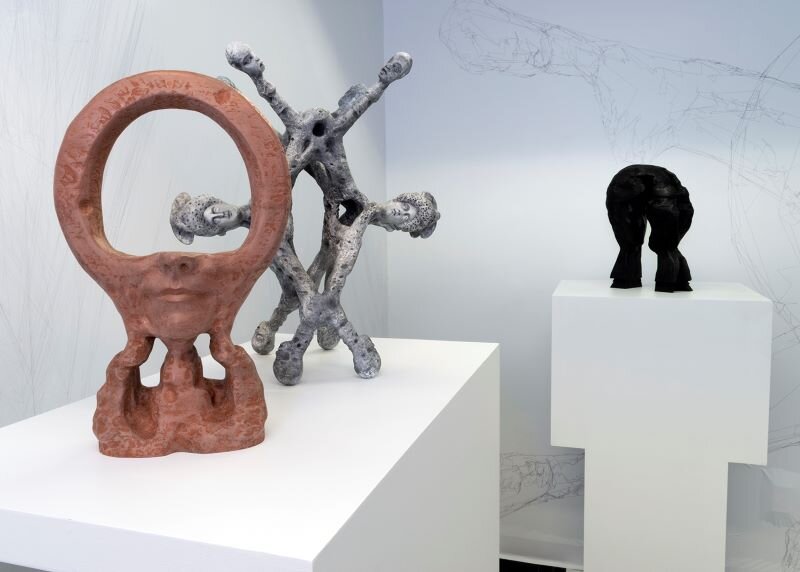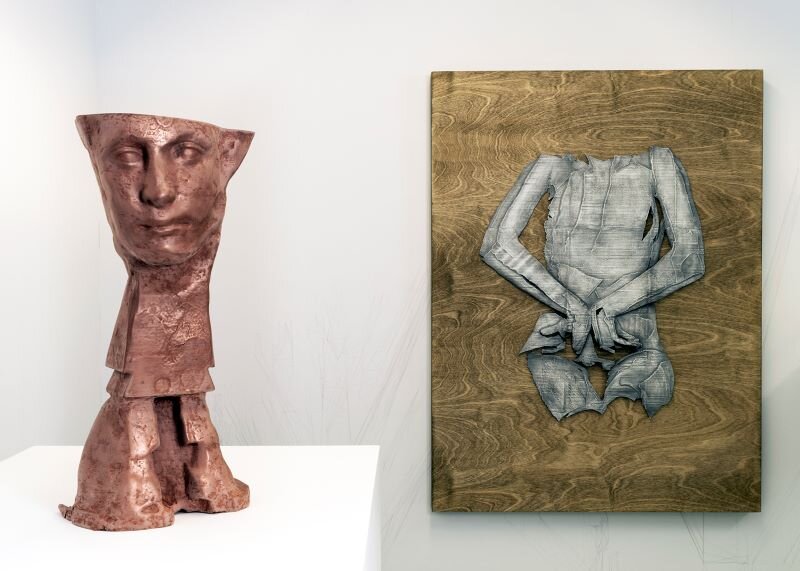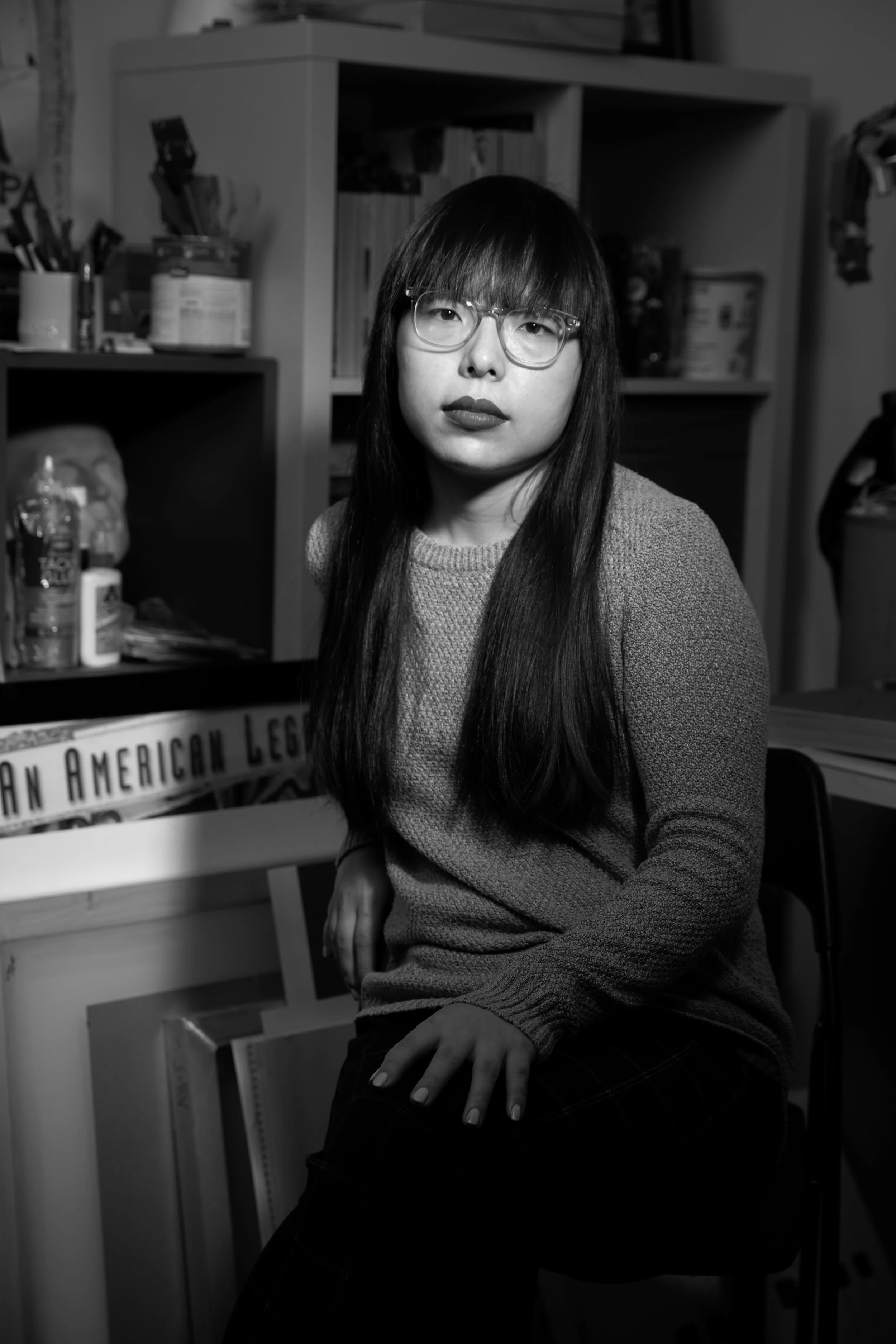Exhibition Feature - CHAPEL at Spring/Break Art Show NYC
Sophie Kahn & Colette Robbins, Installation for Spring/Break Art Show 2021
Arcade Project Curatorial is pleased to introduce “CHAPEL” a two-person exhibition featuring a digital/analog hybrid installation by Sophie Kahn and Colette Robbins. with curation by M. Charlene Stevens. Presented as part of SPRING/BREAK Art Show, the artists are creating work within a post-sculptural context. The installation consists of 3D printed sculptural works, videos, and digitally generated wallpaper using emerging technologies. Tickets are available here.
Chapel will be on view at Booth #1106 from September 8th - 13th. Due to COVID-19 protocols, advanced tickets for SPRING/BREAK Art Show are required for admission.
Thursday: September 9th, 6-9 pm
Saturday: September 11th, 11-4 pm
Sunday: September 12th, 4-6 pm
Works for Sale Here: CHAPEL at SPRING/BREAK Art Show
CURATORIAL STATEMENT
Heresy can be defined as a controversial, unorthodox, or mistaken belief, especially one based on unsound arguments. In medieval times heresy was a subversive offense against those in power, the Catholic Church in particular; today, the heretics are the ones in positions of authority. A new plague is tearing through the population. A new cult has formed with a charismatic leader and followers poised to mortify and sacrifice themselves for their new god. Conspiracy theories have become the new scripture — digital prophecies that foretell the punishment of the wicked and the rewards awaiting the true believers after the promised apocalypse.
CHAPEL, featuring sculpture, works on paper, printed wallpaper, and NFTs by Sophie Kahn and Colette Robbins and curated by M. Charlene Stevens, is a physical and digital devotional space for the exploration of ancient mysteries, practices of corporal mortification, and the contemplation of death.
The difference between a cult and a religion is the number of followers and acceptance into society’s mainstream. CHAPEL is a play on scale. The private chapel is a microcosm of the cathedral, eschewing large-group worship in favor of family or private devotion. The wallpaper represents a bug’s-eye POV of the sculptures, a physical manifestation of a digital simulation inside of the works. The supports from Sophie Kahn’s Machines For Suffering become a forest of vectors, suggesting the flying buttresses of a Gothic cathedral. Colette Robbins’ wallpaper presents an imposing Rorschach-pelvic form of The Artist and Forer Effect, subverting the gaze from Courbet’s Origin of the World.
Sophie Kahn’s life-sized sculptures and bas-reliefs depict their subjects writhing in sacred hysteria or heretical ecstasy. The sculptures are digitally mortified and fragmented, their negative space suggesting omissions and blind spots in the design of the industrial imaging technology used to create them.
Colette Robbins’s sculpture offers a frame for investigating the origins of conspiracy theories and cult worship. Robbins uses remixed ancient symbols, archaic smiles, and augmented Greco-Roman heads. This eclectic imagery—influenced by her extensive online archive—references occultism, archaic cults, neuroscience, and psychology. The downloaded archives are organized into stylistic prompts for her assemblage-like approach to digital sculpting. As she collages, shapes, builds, and deletes fragments, she keeps a critical eye on the narratives that have shaped western civilization—including an awareness of those voices which have historically been erased. These chimeric idols merge arcane imagery with digital materials and practices, linking ancient heresies with contemporary conspiracies.
Colette Robbins, "Future Idols" Digital Animation NFT (2021)
Thoughts on the exhibition by the artists:
Sophie Kahn: The body of work featured in this exhibition draws on the language of hysteria, a now widely-discounted diagnosis that was once widely prevalent and applied almost exclusively to women. For the works of this exhibition I 3D scanned a dancer as she performed the choreographed ‘phases’ of an attack of hysteria — in particular the phases of religious fervor that Dr Jean-Martin Charcot at the Salpetriere asylum termed Périodes des Attitudes Passionnelles.. The poses are ambiguous - the figures have their hands up in benediction, or gesture as if in pain or perhaps ecstasy.
Symptoms that today we would find in the DSM-IV, and which were termed hysterical in the nineteenth century, were seen in the Middle Ages as symptoms of demonic possession. In the nineteenth century, psychoanalysis and psychiatry came into conflict, as doctors began to categorize these ecstatic and extreme behaviors as mental illness - although they failed to locate an organic origin for hysteria. We would now consider their efforts as pseudoscience. Our curator M. Charlene Stevens was interested in contextualizing our historical investigations through the contemporary lens of conspiracy theory, fallacy and pseudoscience, and in the horseshoe effect, whereby the radical left and right bend towards each other in their mistrust and manipulation of truth.
Colette Robbins: I make work from found 3D scans of death masks, phrenological heads, busts, architectural remnants, along with scans of my face. I remix and reanimate these ancient and contemporary fragments digitally and physically, forging digital prophecies. My future idols suggest devotional spaces where ancient mysteries and pseudosciences meet.
The conceptual collaboration in CHAPEL opened up new possibilities for the life of a 3D file. Our conversations inspired us to create a futuristic projection of what a devotional space might be when we live in the metaverse. Does physical work become less important as we build up our NFT collections preparing for our post-physical existence? Will we revert to our feudal ancestral ways as keyboard warriors and cyber bullying ruins lives by recycling medieval mindsets. Is the metaverse a new religion, where the NFT is a currency that buys good fortune and good favor Metaverse afterlife?
Sophie Kahn & Colette Robbins, Installation for Spring/Break Art Show 2021
CURATOR BIOGRAPHY
M. Charlene Stevens is the founder and Editor-in-Chief of Arcade Project and Director of Arcade Project Curatorial. Charlene curated Dark Meat, a series of mixed media works on paper by Elizabeth Axtman, at Satellite Art Show – Austin SXSW 2019 and TwistedTwins–XXY, an installation by Eva Mueller, at Satellite Art Show – Brooklyn 2019. In 2020, Arcade Project Curatorial launched with the exhibition, Spring Forward, curated by Ruben Natal-San Miguel. She has been recently profiled by Forbes, New York Magazine's Bedford and Bowery, and ArtNet News.
ARTIST BIOGRAPHIES
Sophie Kahn is a digital artist and sculptor whose work addresses technology’s failure to capture the unstable human body. She grew up in Melbourne, Australia, and now lives and works in Brooklyn. She earned a B.A. from Goldsmiths College, London, and an M.F.A. from the School of the Art Institute of Chicago. She has exhibited internationally and participated in Transmediale, the Japan Media Arts Festival, and Zero 1. Sophie has taught at Pratt Institute and Columbia College. In addition, she has completed residencies at the Museum of Arts and Design and Pioneer Works in New York City. She is a 2011 N.Y.F.A. Digital and Electronic Arts Fellow.
Colette Robbins received her B.F.A. from The Maryland Institute College of the Arts (MICA) and her M.F.A. from Parsons the New School for Design. She has held residencies at Austevollportalen (Marstein Island, Norway), Cill Rialaig Project (Ireland), and The Vermont Studio Center. Her work has been shown at 101/Exhibit (Los Angeles), P.P.O.W. Gallery (New York City), Deitch Projects (New York City), The Hole Gallery (New York City), Koki Fine Arts (Tokyo), and Workshop Gallery (Venice, Italy), among others. Robbins’ work has been reviewed in The New Yorker Magazine, Artillery Magazine, LA Weekly, and Beautiful Decay. She lives and works in New York City, where she teaches 3D modeling to artists at Pratt and New York Academy of art.
ABOUT ARCADE PROJECT
Founded by M. Charlene Stevens in 2016, Arcade Project began as a digital publication focused on contemporary fine art and its cultural context. For four years, the organization has functioned primarily as an online platform for discovery – featuring exhibition reviews, artist interviews, art fair highlights, film criticism, and the occasional editorial piece. Now with its expansion into a nomadic curatorial platform, Arcade Project continues its mission to foster the careers of emerging and established creatives, launching thought-provoking exhibitions meant to excite and inspire.










